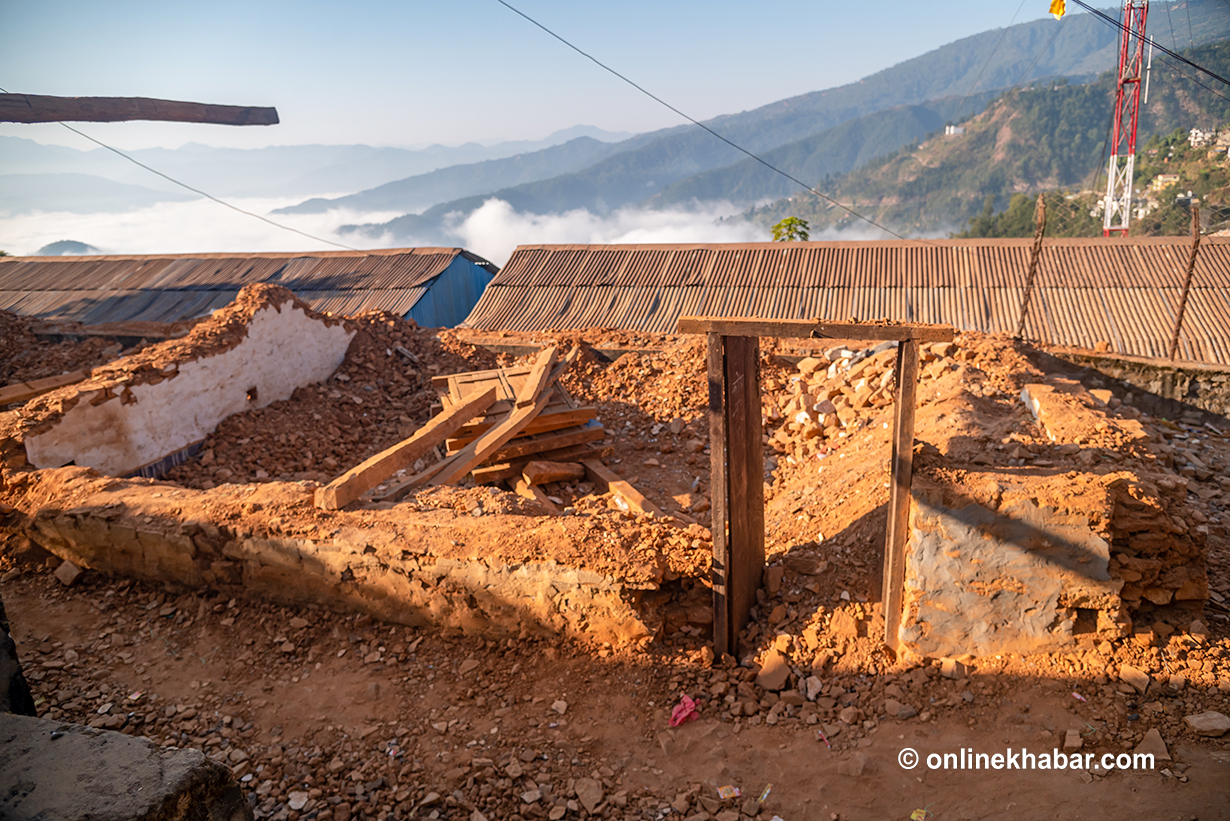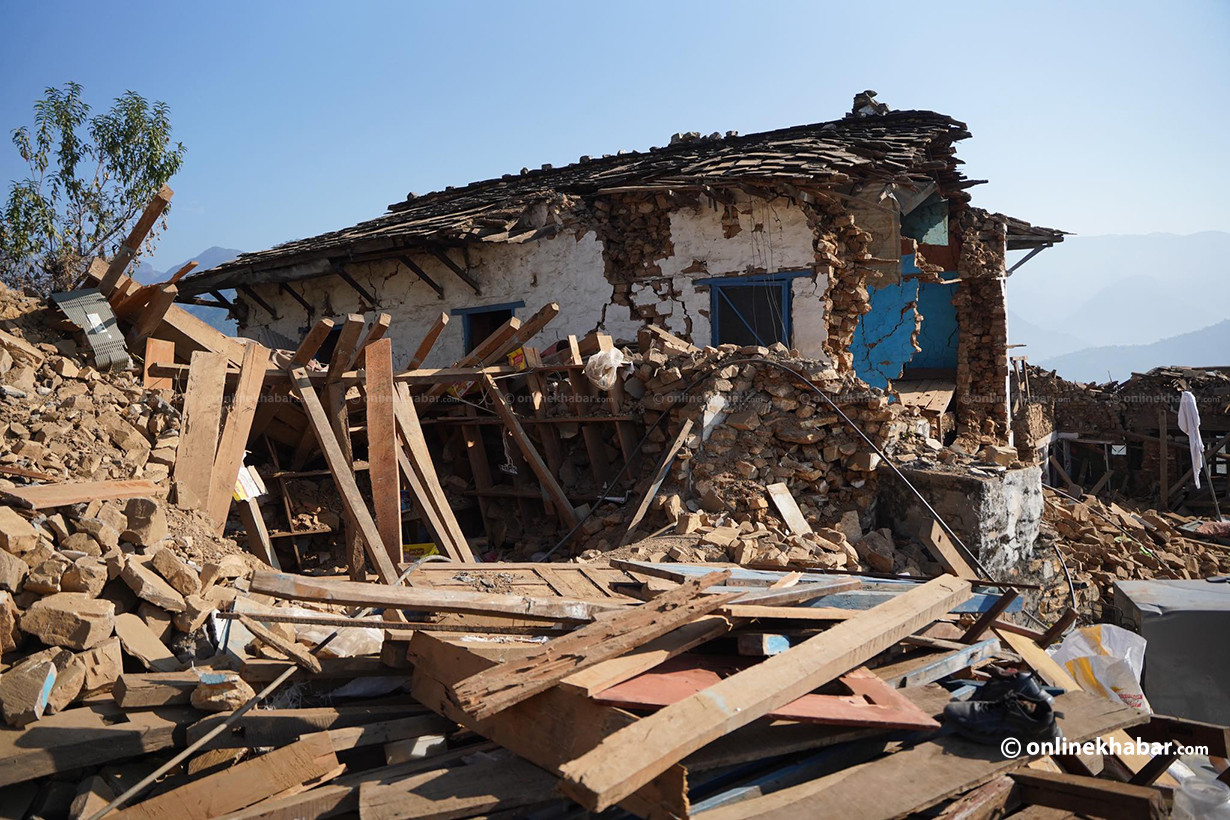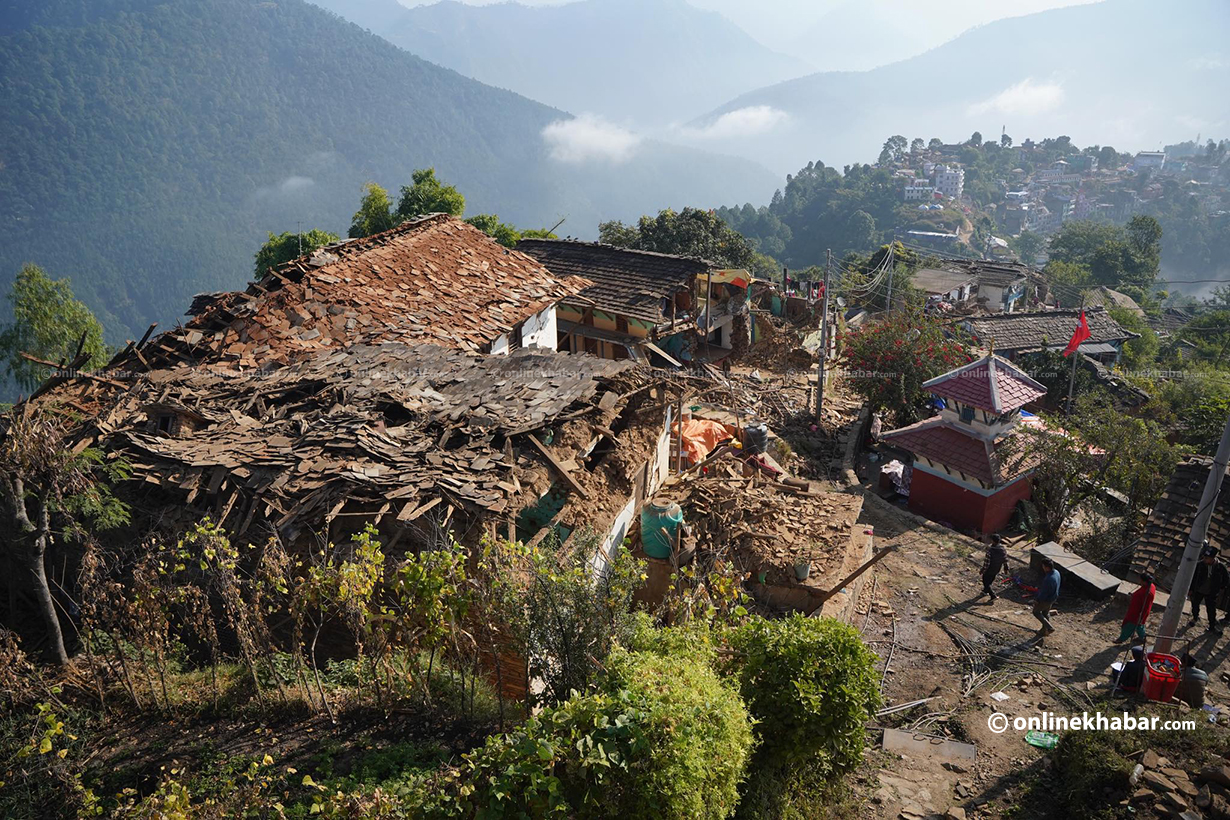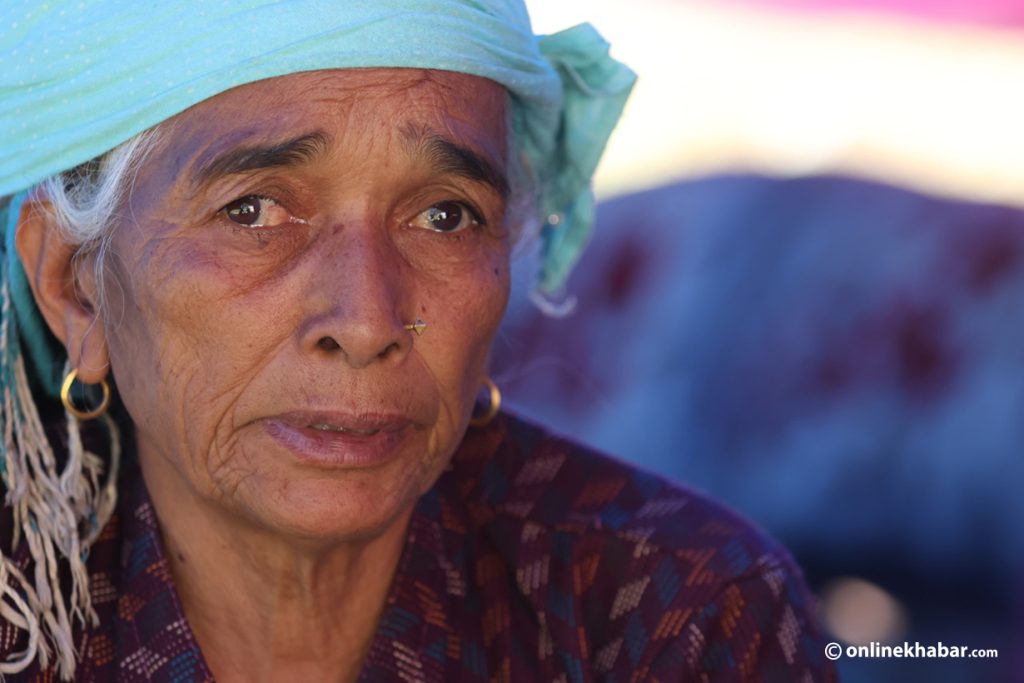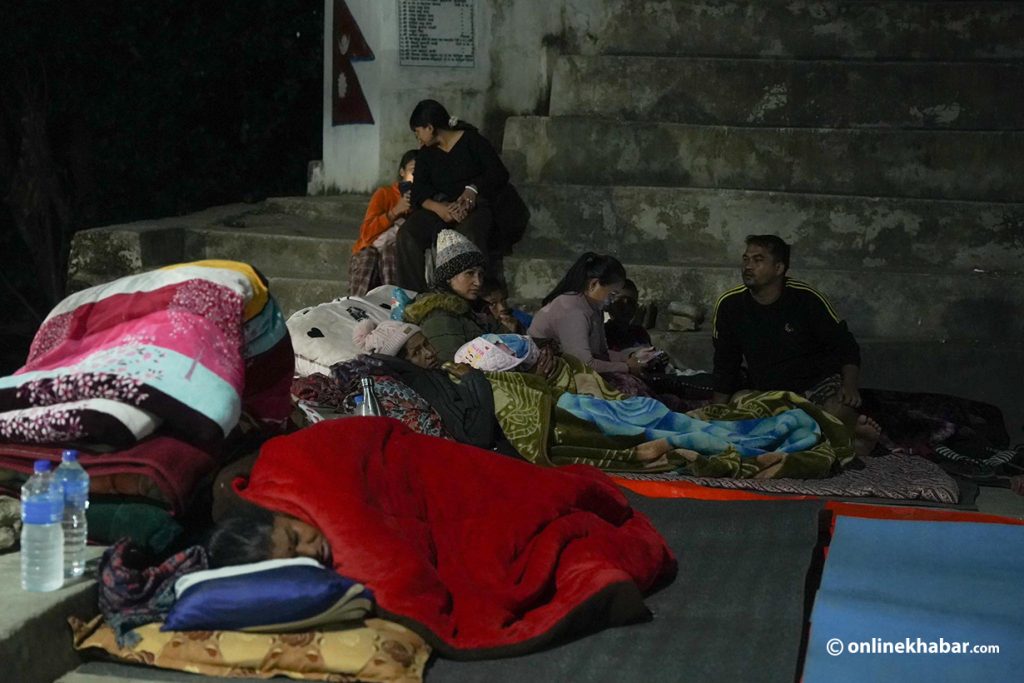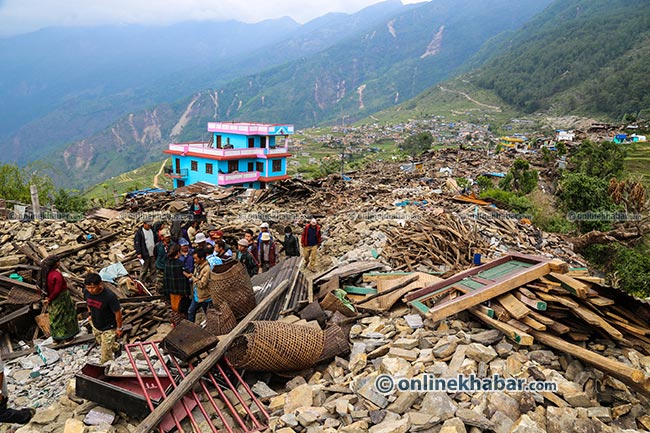
On this day, 88 years ago, Nepal recorded a major earthquake that jolted the whole nation and claimed thousands of human lives. The 1934 earthquake is better known as ‘90 saalko bhukampa‘ in Nepal as it was 1990 BS. In memory of the lives lost, Nepal marks Earthquake Safety Day every Magh 2 (January 15/16 every year) to raise awareness about earthquake safety in particular and disaster safety in general.
Such awareness is crucial because Nepal is in the high-risk zone for seismic activities, with one major earthquake recorded every 80-90 years.
But, do you know why? What is the science behind this? Why is earthquake safety always a big concern in this small country?
Here, we will explain.
Why so many earthquakes?
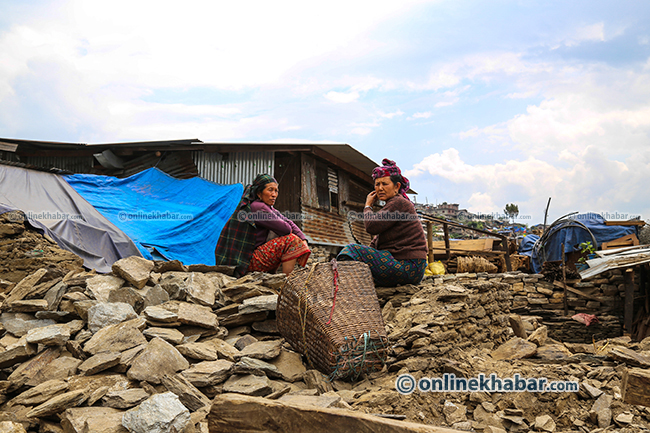
Natural earthquakes generally occur due to two major reasons: volcanic activities and tectonic shifts. Nepal does not have any volcanoes, but it lies just above the fault line of tectonic plates that cause recurring earthquakes, making earthquake safety a key concern of the country.
Tectonic plates are a chunk of land on the earth’s surface. These plates are different from the continents that you know of. Tectonic plates can have both continental and oceanic crusts.
It has been theorised that the earth was one big landmass, named Pangaea. But, below the earth’s crust are various layers that have molten rock. With the motion beneath the earth, the tectonic plates above also move with time. Each year, the tectonic plates move 0.6 inches either towards or away from each other.
Currently, there are seven major tectonic plates in the world with many minor and micro-plates that have been segregated based on their movement. The seven major ones are African, Antarctic, Eurasian, Indo-Australian, North American, Pacific and South American.
Earthquakes in Nepal are caused by the tectonic shift of the Indo-subcontinent beneath the Eurasian plate. The energy of one plate thrusting against the other releases massive energy, causing violent shaking of the crust, which you experience as earthquakes.
These earthquakes are also responsible for the Himalayan range that spread across northern Nepal and beyond. Mount Everest, the world’s tallest mountain above sea level, is also the outcome of the tectonic shifts over thousands of years.
It has been studied that the area where the two landmasses collide has not settled down, causing the area to be unstable. Because of the unstable land distribution, the probability of earthquakes in this area increases, making the country further focus on earthquake safety.
The 2015 earthquake
The earthquake of 2015, also called the Gorkha earthquake, struck Nepal on April 25, 2015. It killed about 9,000 people, leaving thousands more injured and more than 600,000 structures destroyed.
In the four hours that followed the main event, at least 14 aftershocks of local magnitude above 4 were recorded. Another significant aftershock was recorded on May 12, 2015, with a local magnitude of 6.3.
The 2015 earthquake was also a result of the tectonic shift. Following this event, awareness of earthquake safety has further increased in Nepal.
Things that intensify the damage
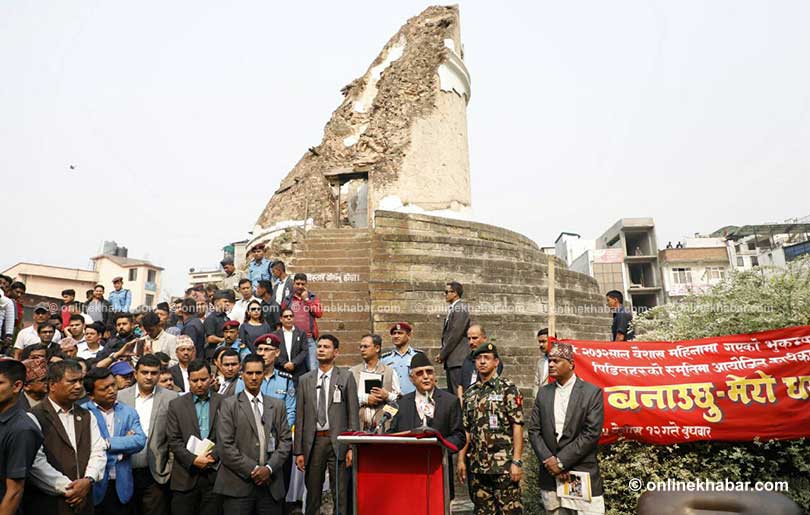
How strongly you feel the earthquake above the earth depends on various factors.
One of those varying factors is the epicentre of the tectonic clash beneath the earth. The nearer the epicentre to the earth’s core, the less shake you feel at the crust, so if the plates clash near to the crust, the shake is rather violent.
Another reason why earthquakes in Nepal, and particularly in Kathmandu, can be devastating is the 300-metre deep layer of clay that it sits over. The clay observes the seismic energy and loses its initial properties, the process is known as soil liquefaction. This affects the foundation of the houses and buildings causing them to crumble down.
Devastating results may also be experienced when houses do not comply with the 1994 National Building Code. This seemed to be a problem during the 2015 earthquake as many structures built during the rapid urbanisation did not adhere to the compliances put in place for safety reasons.
Can you predict earthquakes?
As of now, it is a big no. Though you know Nepal lies above the fault line and you can expect an earthquake at regular intervals, there is no way of telling exactly when and where it will strike. This is the major reason why earthquake safety is an all-time concern.
However, attempts are being made to study and map earthquakes as well as tectonic activities across the world, in real-time and on a geological time scale (throughout the hundred of thousands to millions of years).
Institutions around the world have set up new state-of-the-art devices to better understand the pattern and behaviours.
Earthquake safety tips
Here is how you can protect yourself and the people around you from the disaster, and also contribute to communal earthquake safety.
Before an earthquake
- Prepare for a possible emergency. Have a first aid kit, a battery-powered radio, a flashlight, and extra batteries at home.
- Learn primary first aid and have a fire extinguisher at home, if possible.
- Turn off the gas, water, and electricity when you are not using them.
- Talk with your family and discuss a safe space to meet; communication will be the first thing that gets affected during an earthquake. Know the emergency numbers to call.
- Do not put heavy objects on high shelves; they can fall on you during an earthquake.
- Learn about the nearest exit points in places you frequently go to; it can be schools, workplaces or recreational centres.
During an earthquake
- Stay calm, do not panic or do not cause a stampede. Keep a check of your surroundings.
- If you are indoors, take support of a wall or pillars or stand in a doorway. Stay away from windows and outside doors, or any electrical outlets or appliances.
- Take cover under heavy furniture (a desk or table) that does not crush you.
- If you are outdoors, stay still and near the ground. Stay away from power lines, fire, poles, tall buildings, walls, or anything that might fall on you.
- If you are inside any vehicle, stop it on the side and wait until the earthquake stops.
After an earthquake
- Check yourself and those around you for injuries. Provide first aid for anyone who needs it or contact first responders.
- Check water, gas, and electric lines for damage or leaks.
- Turn on the radio. Be updated about the situation.
- Stay out of damaged buildings.
- Be careful around broken glass and debris. Wear boots or sturdy shoes to keep your feet safe.
- Follow the emergency plan or the instructions of the person in charge.
- Expect aftershocks, and be prepared for them.





